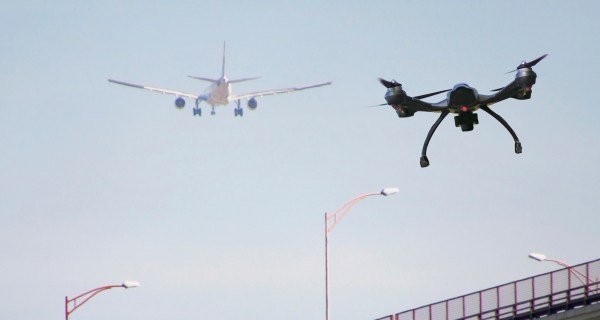The FAA is developing an air traffic tool built for the space age. It may need help

When a rocket is launched into orbit, the Federal Aviation Administration will close off airspace — a measure to prevent even the remote risk of debris hitting an airplane. That wasn’t always a problem, since rocket launches were relatively rare events. But now, as the commercial space industry continues to grow, there’s increasing pressure on the agency to ensure launches don’t impact commercial flight schedules.
In Florida, home to several international airports, the Kennedy Space Center and the Cape Canaveral Space Force Station, “the closure of airspace to accommodate commercial space launches now happens often enough to noticeably affect airline schedules,” Transportation Secretary Pete Buttigieg explained back in May.
Yet there’s concern that a software tool meant to limit the impact of these launches — and better manage the national airspace — isn’t developing as fast as it could. Called the Space Data Integrator, this FAA system is designed to funnel data collected from space vehicles in “near-real time.” Eventually, the SDI is supposed to play a role in a more integrated platform that could send information to air traffic controllers, the Department of Transportation’s inspector general’s office told FedScoop.
The FAA has already been able to reduce the average amount of time that airspace must be closed, from over four hours to just over two hours. It’s also using time-based launch procedures and dynamic launch windows to address the problem.
Still, documents obtained by FedScoop through a public records request outline limited funding for SDI and a stretched budget, factors that have led some to think that the project could use more support, even as the FAA pursues other strategies to mitigate the impact of commercial launches. As both air travel and launches increase, slowed development of the tool or one like it would mean that current issues resulting from this challenge, like delays, could get worse, according to a source on the House Transportation and Infrastructure Committee.
In a response to a request from that committee’s aviation subcommittee, the Department of Transportation’s Office of Inspector General published a report in June calling the tool’s effectiveness “limited.” Now, some are advocating for new language in a proposal for the FAA reauthorization bill to better fund the tool.
“The ability to regulate airspace for safety must meet the increasing demand on the use of the airspace,” Rep. Rick Larsen, D-Wash., ranking member of the House Transportation and Infrastructure Committee, said in a statement to FedScoop. “The House-passed FAA reauthorization prioritizes the deployment of new technologies, like the Space Data Integrator (SDI), to help maintain safety and efficiency for all airspace users. The guidance and funding in the bill will help the FAA provide airspace access that works for both the aviation and commercial space industries.”
SDI, explained
A prototype for the SDI tool was installed at the FAA Command Center in Warrenton, Va., in June 2021. The tool is meant to replace a manual process used for data entry and is designed to feed telemetry information — like speed, altitude and vehicle position — from launch and re-entry vehicles to the FAA’s space operations team.
Notably, it’s the first system to receive automated data from a launch provider, according to an FAA spokesperson. A screen of the SDI visualizes the flight path of the vehicle, as well as other metrics, according to Duane Freer, manager of the Air Traffic Control Office’s space operations, and the FAA presentation obtained by FedScoop.
With this platform, the FAA says the agency can “more dynamically manage the airspace,” reducing the time needed to close airspace to flights and “respond more effectively to contingencies.”
Notably, not all the information on the SDI would likely be shared with individual air traffic controllers, since their screens will need to be populated with other information, too. “There’s a lot of information out there, but the controller needs to have one singular focus on one piece of glass,” Freer told FedScoop. “What we’re trying to do is make this as easy and integrated into that existing system. So it makes it easier and more manageable for the controllers.”
Myriad challenges for SDI
The SDI tool has previously run into some challenges, as evidenced by a June 2023 presentation to the Joint Resources Council, a governing board that approves investments and helps make decisions about SDI.
That presentation, obtained by FedScoop through a public records request, involved a request for funding in advance of a final investment decision, as well as support for software fixes and as-needed security scans, among other objectives.
“As launches continue to increase in number and complexity, the manual nature of managing airspace will continue to increase and inefficiencies will continue to grow,” the presentation stated. “Currently, Air Traffic systems do not have automated data from Launch and Reentry Operators (LROs) to use in decision making.”
When FedScoop reached out to the FAA about the presentation, the agency said that it does not currently measure the inefficiencies of the manual process, though those calculations could be part of future investment analysis work. When asked whether the system had bugs, the agency said that there were no current bugs preventing normal operational use and that a data encryption issue mentioned in the inspector general’s report was also resolved.
But other hurdles remain, including the fact that SDI is only installed in a single location: the Warrenton Command Center. Similarly, only one company, SpaceX, currently uses the tool. SpaceX is responsible for the lion’s share of commercial space launches. Still, the inspector general report noted that while Blue Origin and Pacific Spaceport Complex Alaska were both connected to the system and had been in testing since 2022, the agency, a spokesperson said, doesn’t have a target date for onboarding either into the system. Neither Blue Origin nor Pacific Spaceport Complex Alaska responded to a request for comment by publication time.
A spokesperson for NASA said that the tool is used by commercial space providers and the FAA. Space Force told FedScoop it doesn’t need SDI, either.
“The US Space Force is committed to partnering with the FAA to develop national and commercial spaceflight capabilities, which can then be leveraged to bring cost and schedule advantages to the DoD and the public,” Col. Doug Pentecost, deputy program executive director for SSC’s Assured Access to Space (SSC/AATS) program office, told FedScoop in an email. The Space Force doesn’t currently use SDI for its national security space launches, he added, since there’s an “existing proven process” for the Eastern and Western ranges.
There’s also the question of SDI’s timeline. Originally, the tool was supposed to receive a final investment decision in 2019. However, the agency later decided to pursue limited deployment of an operational prototype — the tool being used today — in order to provide capabilities in the near term while continuing to collect information, the agency said.
“Development and deployment of the SDI operational prototype is now complete,” the agency said in an email, adding that the system is transitioning to sustainment funding in 2025. Still, a final investment decision on a streamlined system integrated into existing air traffic systems isn’t expected until 2027, a timeline noted by both the DOT’s OIG report and in the presentation obtained by FedScoop. That timeline would put the tool on a gradual implementation timeline that would end in 2032, the OIG report noted.
“Everybody certainly would like it sooner than later,” Freer told FedScoop. “That’s always the struggle, but I don’t think there’s any delay that it’s going to cause to industry or anybody else. I think we have a bridge to that future system that’s going to be able to allow growth and allow reduced impact and move us to that date. So while we would have liked to have it sooner, I don’t see a negative impact.”
FAA authorization could accelerate tool
The language described as “Space Launch and Reentry Airspace Integration Technology” in proposed congressional reauthorization language would allow for the FAA to appropriate up to $10 million a year to speed up the development of SDI, a Transportation committee source confirmed. That’s a significant bump from its current annual budget of $4.5 million, which, the agency told FedScoop, is meant to cover maintenance, including personnel, software, licenses, hardware and security support.
Isaiah Wonnenberg, vice president of regulatory affairs for the Commercial Spaceflight Federation, which represents commercial space companies, said SDI “provides foundational capabilities for managing the National Airspace System during commercial launches.”
“The FAA should invest in the SDI to provide additional capabilities, including the integration of launch and reentry data directly onto air traffic controller displays, in a manner consistent with recommendations provided by the 2019 FAA Airspace Access Priorities Advisory Rulemaking Committee,” he added.
Regardless of whether increased support comes through — and FAA reauthorization expires at the end of this year — the agency now has several recommendations to meet, as outlined by the OIG report. Mitre, a research-and-development nonprofit that assists the government with homeland security and aviation sectors, is also working on future concepts for commercial space operations in the national airspace, the FAA confirmed.
Meanwhile, the number of licensed commercial space flights, which exceeded 100 this year, is expected to grow. So too are the number of spaceports planned across the country.






